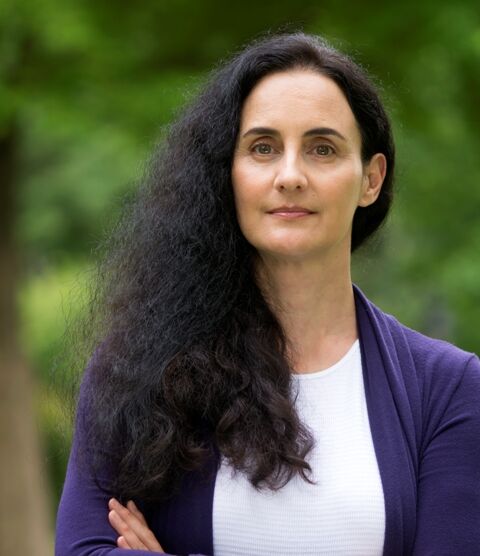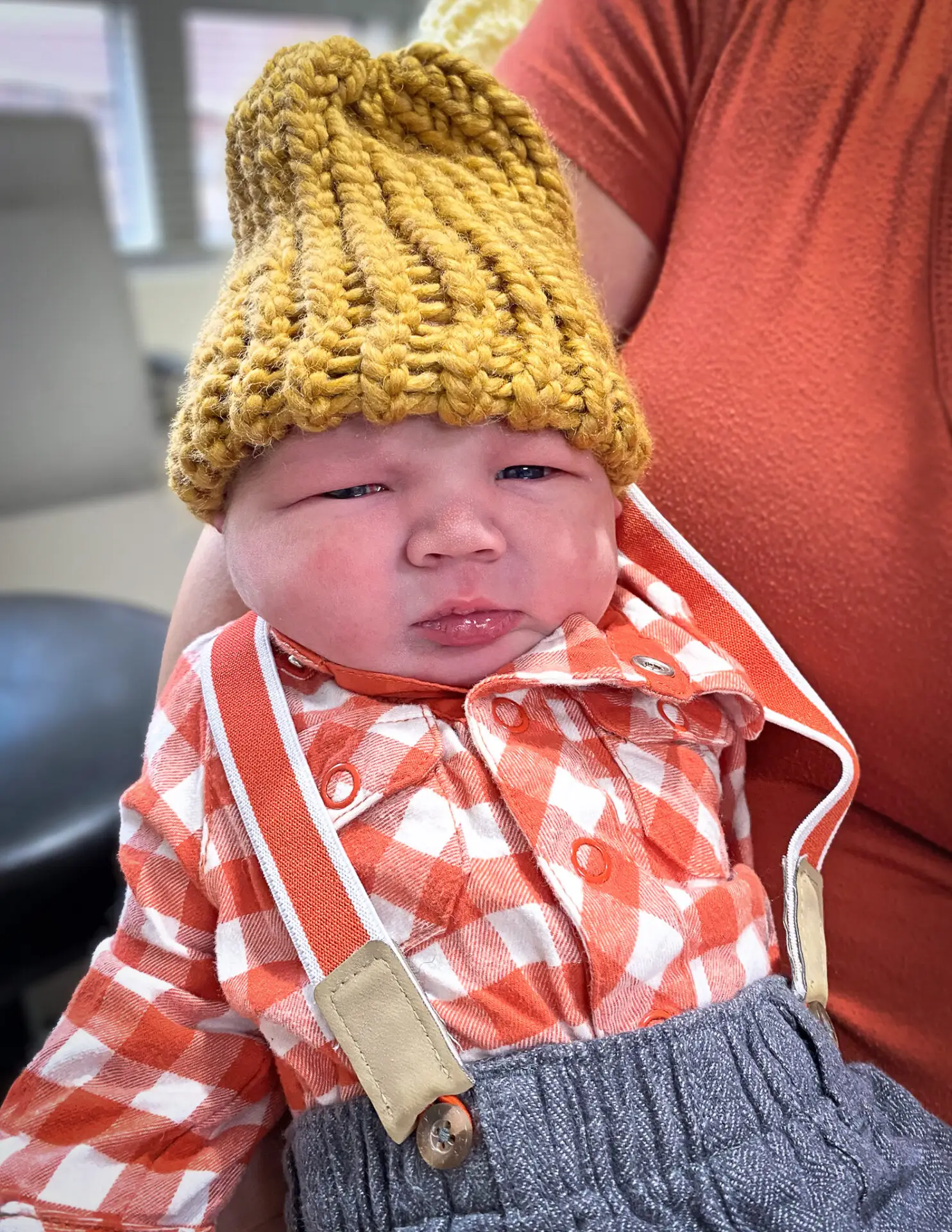In her new novel, “Our Eyes At Night,” local author M Dressler explores what it means to live and love in a world where ghosts and the living interact with one another. The novel will be published on March 1.
The novel is part of Dressler’s “Last Ghost” series and will continue the stories of her main characters: Philip Pratt, a ghost “cleaner” who banishes souls, and Emma Rose Finnis, a ghost whose greatest desire is to remain in the living world. Readers don’t have to be familiar with the series to read the new novel; though the now three books in the series work in tandem with one another, they don’t have to be read linearly.
In “Our Eyes At Night,” Philip Pratt finds himself in the Utah desert again faced with Emma Rose Finnis, the only ghost to have ever evaded him. Except now, Emma is the leader of a gang of ghosts, and she’s even more determined to live. The novel is told through multiple points of view and balances lyrical prose with a gripping ghost tale.
The Moab Sun News chatted with Dressler about her inspiration for the book and her writing process. Dressler will also discuss her book with Back of Beyond Books on April 20.
Moab Sun: How did you get your start in writing?
Dressler: I actually began life as a ballet dancer—that was my first career and my first love. Dance is also about storytelling: it’s all about movement and rhythm and narrative and I just loved it so much, but at the same time I loved books and writing. I always had this feeling that when I was done being a dancer that I would become a writer. And that’s exactly what happened.
I always wanted to write ghost stories. But ghost stories are challenging to write, because they’re beautiful and lyrical while also being gripping and suspenseful. So it wasn’t until later in my career that this idea for The Last Ghost series came to me.
Moab Sun: You write a lot about Utah and the desert—what do you think is inspiring about living in this area, and why do you like writing stories based in these places?
Dressler: My husband and I first visited Moab in the 90s, and I immediately fell in love with the landscape. That’s the first thing you see, of course, the incredible geography, but the more we came back the more I started to fall in love with the histories and peoples of the region. We became convinced we had to live here. With this enormous luck and privilege, we were able to move here in the early 2000s, and I just started immersing myself in the place.
The thing is, though, as a writer, I don’t feel like I can just show up in a place and start writing about it. I have to be in a place for a while. So only after living in the Moab area for years did I start to feel that my love for the landscape and my love for the histories and the narratives of the place came together in some form of knowledge that I could then translate into a meaningful story about the Canyon Country.
I became very interested in the ghosts of the West. A lot of people have crossed our landscape, haven’t they? The desert in Canyon Country is really contested ground, and there’s a lot that haunts it. It wasn’t until I started to feel I had a handle on that history that I felt I could carry the series I started—the Last Ghost series—into the desert space.
Moab Sun: What do you find powerful about writing stories about ghosts interacting with the living—the intersection of past and present—as opposed to writing in one timeline, like a historical fiction?
Dressler: I also love writing straightforward historical novels, but you’re limited to the history and to the facts. What ghost stories allow you to do is expand the range of conversations you can have.
My ghost stories are unusual because in the traditional ghost story, there’s a ghost and it rises and presents a problem and then you finally lay it to rest, and you don’t have to think about it anymore. I love those stories, but the structure is designed so that when the story is over, you don’t have to think about the problem that story represented anymore. And I don’t want to do that.
My ghosts are not interested in rescue. They’re not interested in finding peace or being put down. They want to be seen—they want their lives and afterlives to be understood, and they want a place in the sun. One of the main characters, Emma Finnis, died over 100 years ago, she was poor working class, immigrant, female, she was expected her whole life to be invisible. As a ghost, she’s not interested in being invisible anymore.
Ghost stories give us this great opportunity to talk about the margins of history and bring those stories into the light.
Moab Sun: What keeps drawing you back to writing about Philip Pratt and Emma Finnis?
Dressler: The thing I love about characters and human beings in general is their potential to grow and change. The thing about ghosts is that we don’t tend to think they do that—and that’s something that Philip Pratt believes, that ghosts aren’t really fully human. He really feels really feels that he’s doing good in the world by giving ghosts peace.
Whereas Emma’s worldview is just the opposite. She feels she has every right to be and persist and keep growing and learning. With the two characters, neither one of them are villainous, they just have a different way of thinking about life and death.
The challenge comes from seeing if either one of them is going to grow. Emma has this incredible opportunity with, practically, immortality. What is she going to do with it? How can a spirit continue to evolve and adapt and learn about the world? And with Pratt, the big question is, is he going to become more empathetic? These stories are about how we cling so tightly to these definitions of who we are, and to change that is really to rock our worlds.
Moab Sun: The book is set in a “climate-ravaged” town. Why did you decide to write about climate change for this story?
Dressler: The desert has a front row seat to climate change. If you’re going to write a novel set in a contemporary setting, or even a little bit in the future, it’s hard not to talk about climate change. How would you ignore it?
One of the driving questions for me is, are we leaving the planet more fit for the dead? Ghosts traditionally have been used to amp up our fears, to get us to think about this thing over here that is fearful instead of something else. I think what quite often happens is that we create ghosts in order to not look at other things. We’re taught to be afraid of the shadowy being instead of focusing on the thing that we should really be afraid of, like, wealthy polluters. And so for me, that’s where it all comes together.
Moab Sun: Can you expand a bit on your writing process?
Dressler: My process over the years has been pretty slow. When I started writing ghost stories, what happened was that Emma just appeared to me. This sounds corny, but she just manifested in front of me. I was on a trip to California and I was along the beautiful coast there, and this little thought just flooded into my head: “it’s so beautiful here. Even if you died, you wouldn’t want to leave.” The minute I had that thought, poof, Emma appeared.
It takes a long time to listen to a ghost and figure out what they’re trying to tell you. So it usually takes me several years to write a book. My process is to listen. I don’t outline books, I don’t plan them in advance. I just listen to the character and I research the setting of the book, and then I let the story unfold.
What’s happened with The Last Ghost series is that each book has has come more quickly. “Our Eyes at Night” just it flowed—it was almost like it was writing itself. It’s like I’ve been waiting all my life to write that book.
Moab Sun: Do you have anything else you want to add?
Dressler: It’s also a love story. That kind of surprised me, because I think we don’t think of ghosts being deserving of that, or of making connections in that way. One of the things I love about writing about ghost stories is that they get you to think about body and soul. Emma is really interested in how she’s not a body, but she’s not smoke. She occupies this really fluid place. I love the opportunity to think about how she feels and touches and strokes the world, and what would it mean if she found someone or something that she loved? In this case, in this book, she does. It was really interesting to try and tell a page turning ghost story that also has deep and important themes about climate and what it means to be seen, and to think about connection.



